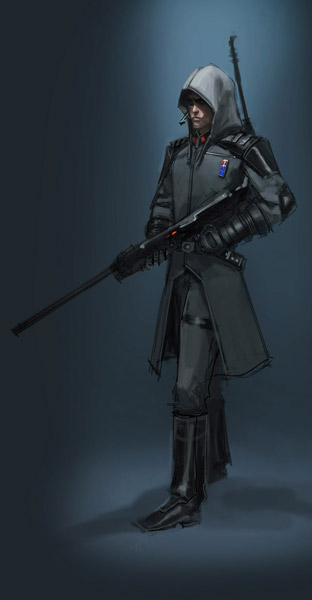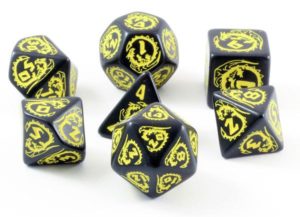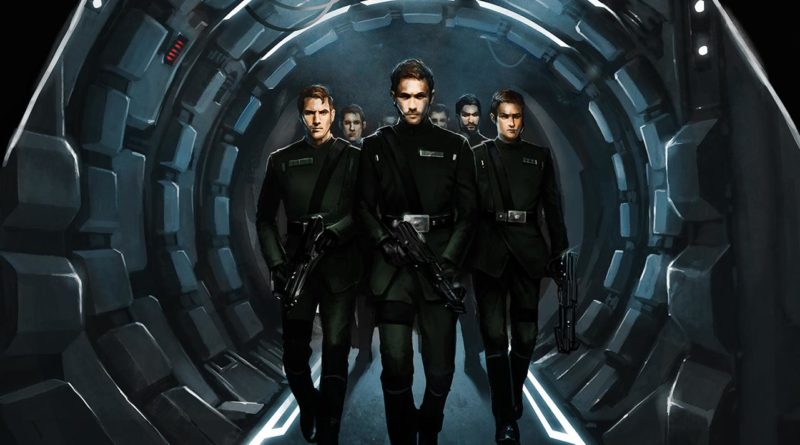Using Dice to Generate Tension
“You’re hanging on the side of the building. You have 90 seconds to get to the top before the probe droid comes around the corner.”
 Across the table, he looks over the character sheet of Hex, his rebel SpecForce sniper. We’re playing the Star Wars D6 system. He’s one floor up on a five story building. His target: An Imperial Moff with information about a top secret TIE Fighter project. While the player sitting next to him was already inside the building, disguised as an imperial lieutenant, his job was to get to the roof to take up sniper position to provide cover.
Across the table, he looks over the character sheet of Hex, his rebel SpecForce sniper. We’re playing the Star Wars D6 system. He’s one floor up on a five story building. His target: An Imperial Moff with information about a top secret TIE Fighter project. While the player sitting next to him was already inside the building, disguised as an imperial lieutenant, his job was to get to the roof to take up sniper position to provide cover.
He rolls the dice, coming up two points over. He eases up onto the third floor building edging, and looks up, ready for the next floor. Another roll. Six points over. He’s on the fourth floor. He rolls the dice.
His foot slips on the duracrete, his hand slips. He makes a roll and holds onto the edging, dangling by one hand over the shrubbery. He hears the “deedlydeet deet … deedly deet deed da,” of the probe droid coming near, sees the spotlight shining on the grass around the corner.
“Time is running short,” I say. Sweat forms on his brow, he rolls the dice. Success. He pulls himself up onto the fourth floor. He rolls again. The wild die explodes, then explodes again. He hurls himself up to the fifth floor then throws himself up over the top of the roof at the last minute, just as the probe droid deedlydeet deet da‘s around the corner. He made it.
–
 Now, I normally don’t recommend rolling dice over and over again for the simple act of climbing the side of a building. However, in the right circumstances, it can make things really interesting. I left out bits of the narrative above where the other SpecForce agent worked the party, trying to get close to the Moff in order to track him easier. By splitting the climb into multiple rolls, I could more easily shift focus over to the other player to heighten the suspense of the player climbing.
Now, I normally don’t recommend rolling dice over and over again for the simple act of climbing the side of a building. However, in the right circumstances, it can make things really interesting. I left out bits of the narrative above where the other SpecForce agent worked the party, trying to get close to the Moff in order to track him easier. By splitting the climb into multiple rolls, I could more easily shift focus over to the other player to heighten the suspense of the player climbing.
Also, by splitting it up, it increased tension in general. With each roll, there was a chance of failure. Each roll caused the player to chuckle nervously. Would this be the moment the probe droid arrived? Would this roll cause the player to stumble and fall to his death? When he finally arrived on the roof, the relief he felt was palpable in the room.
At my tables we utilize the Burning Wheel rule “Let it Ride,” meaning that if you roll once, you don’t get to roll for the same skill unless the situation changes, so no “I rolled to unlock the door and failed. I’ll roll again! And again! And again!” If you failed to unlock the door, you’re unable to do so. I think it works a lot better in order to keep players from rolling dice until they succeed. You failed, find another way around this problem. The only place where this doesn’t apply is for things like this: using multiple rolls to up the drama in the scene.
I encourage everyone to utilize this at their table. I’ve found it really ramps up the drama. Just make sure that failure doesn’t lead to the total destruction of the plot. We can talk about that at a later point.

